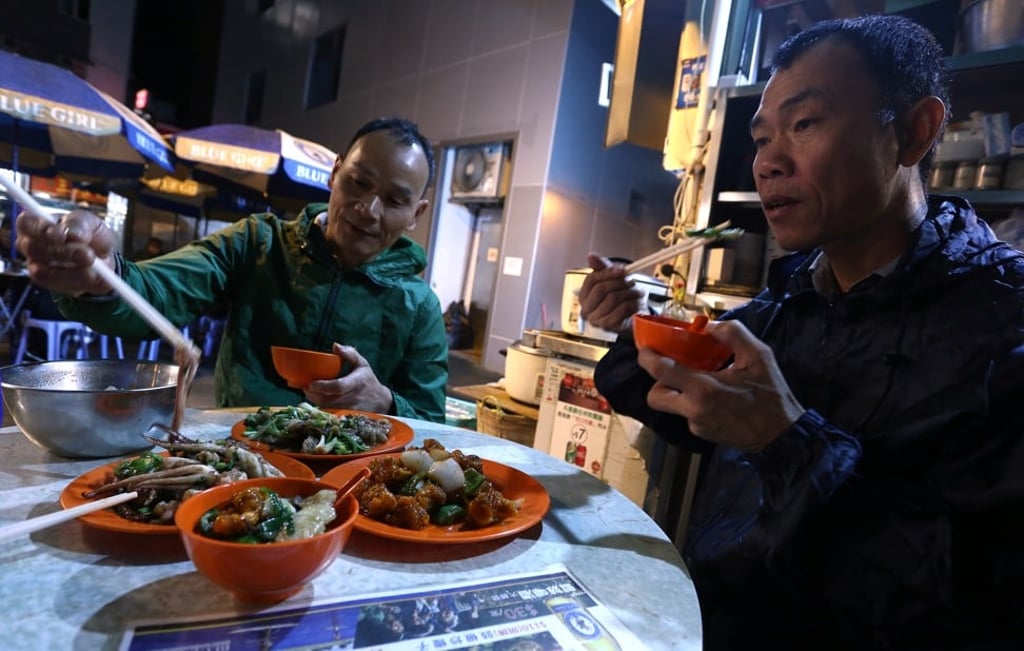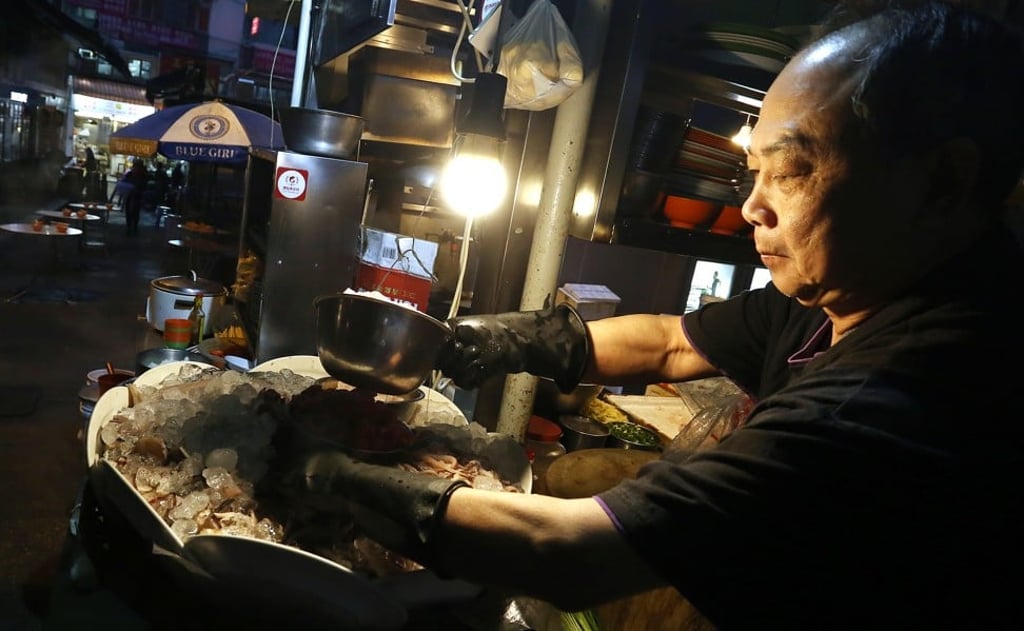Why Hong Kong’s surviving dai pai dongs are still loved, and the owners who just won’t quit
- Only around 25 dai pai dongs, or street food stalls, are still open in Hong Kong, and many have had to make compromises to survive
- Offering delicious, cheap dishes and friendly atmospheres hard to find elsewhere, they continue to attract streams of regulars old and young

It’s 6pm in Hong Kong and as the last glow of sunlight disappears, it’s time for most people to start winding down. But for Lam Kee-sing, the busiest time of the day is just starting.
Lam is the chef-owner of Sing Kee, one of the few remaining dai pai dongs – street food stalls – in the city. At the stall’s location down a narrow alleyway on Stanley Street, in Hong Kong’s Central business district, the air is filled with the familiar orchestra of roaring gas burners, sizzling food and the clanking of ladles on woks. Such sounds, however, are becoming harder to hear on Hong Kong’s streets today.
Lam is engrossing to watch as he skilfully handles two seasoned woks in the dimly lit, open-air kitchen. He tips a mixture of fish chunks, chopped spring onions and ginger into one wok, and starched pork loin into the other. As the aroma of sizzling meat wafts into the air, he dips a ladle into a palette of seasonings on the side, adding them in swift succession. He swirls the woks and flips the contents one after another, and before you know it, the food is on serving plates.


Sing Kee is one of only 25 or so dai pai dongs still existing in Hong Kong. It is minimally furnished and covered by a characteristic green tarpaulin that protects customers from the elements. It has staunchly maintained its look of yesteryear since opening 70 years ago, from its rusted cast iron fittings and worn utensil holders to the stainless steel soup bowls and orange plastic plates. Its history is reflected in the signage caked in, and obscured by, cooking grease.